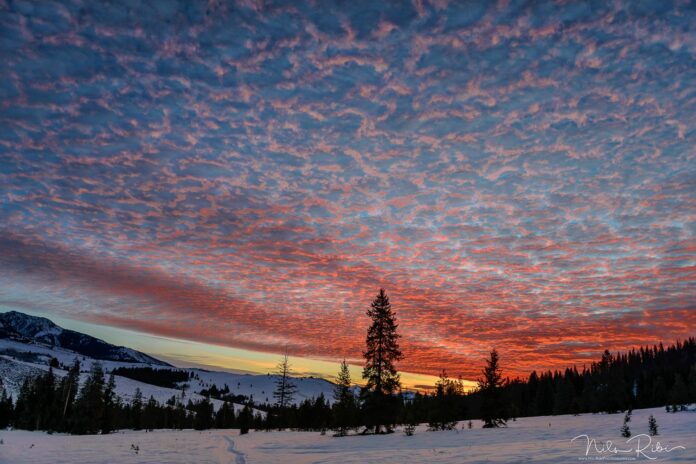BY HANNES THUM
Saying exactly when winter starts is like saying exactly what time dusk is in the evening.
“I can look that up on my phone,” people will say. “My weather app tells me when dusk is—down to the second,” as they look down instead of up, while the sky’s nightly gift to our visual system takes place in full Technicolor (that’s a trademark, by the way).
If you took a hundred people and stood them out in a field tonight (bundled up against the cold) and told them to watch the evening light fade to darkness and to each raise their hand when they think they’re at the moment of dusk, I think you’d get a hundred different answers, and the range of answers might be as wide as an hour. Somebody will say that dusk is when the sun goes behind the nearest hill, throwing us into shadow. Somebody will say it is when the sun goes below the true horizon (which is a hard thing to see in our valley). Somebody else will say dusk is when it gets dark enough to see a star in the sky. And so on.
I’d argue that it doesn’t matter much when we call dusk dusk. Or, rather, what one calls dusk ought likely to be rooted in one’s perspective on the evening and what one is up to at that time. A hunter calls it dusk when it is too dark to shoot well; a traffic cop calls it dusk when he or she wants people to turn their headlights on. An owl doesn’t even know the word dusk but does know when to hunt.
That’s the kind of point I mean about when winter starts. Some wall calendars insist, with their tiny subscript centered on the bottom of December 21 of this year, that the first day of winter is not until next month. But there’s snow on the ground already. People are skiing already. Can a calendar printed over a year ago accurately say when this winter would start?
Last week, an ermine ran across the path, its coat splashed with white in its annual transition from summer fur to winter fur (I always think of Dillard’s essay when I see one: “His journal is tracks in clay, a spray of feathers, mouse blood and bone: uncollected, unconnected, loose-leaf, and blown”). The elk are beginning to shift around, restlessly, grouping up in new places. The chickadees are feeding madly (but then again, they always feed madly).
I think, but am not sure, that the black bears that I see very often in the summer out one local canyon are hibernating by now. I haven’t seen any sign of them lately, so I assume they are in their dens. Not even a track in the new snow. But then again, they might have just moved along to someplace else. Who I am to try to understand what winter is to a bear?
Hannes Thum is a Wood River Valley native and has spent most of his life exploring what our local ecosystems have to offer. He currently teaches science at Sun Valley Community School.

